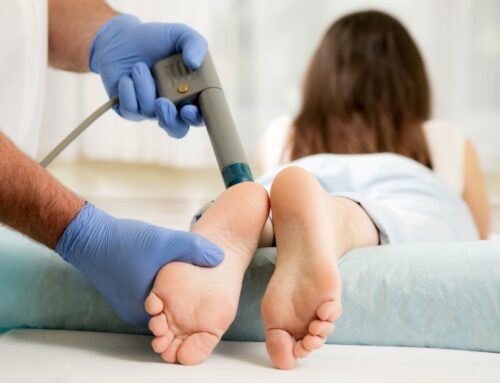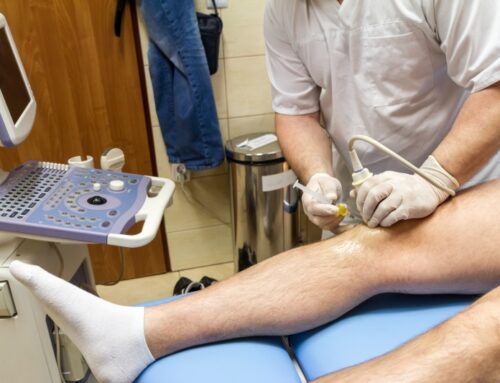Achilles tendonitis is one of the most common causes of ankle pain in anyone active such as walkers, runners, and those who play team sports. The cause is complex, but too much activity in a short time frame is one of the most critical factors. Recently, we know that other factors are important in increasing the risk of this condition. Studies suggest that the plantaris tendon injury may play a role.
What is the plantaris tendon?

The plantaris tendon arises from the muscle. This muscle starts at the knee and travels between the large calf muscles. In the middle of the calf, the muscle becomes a small tendon. As the tendon travels down the calf, it courses close to the inside of the Achilles tendon. Finally, it attaches to the inside of the large heel bone called the calcaneus.
How does the plantaris tendon lead to Achilles tendonitis?
We are not exactly sure. Dr Masci has teamed up with other researchers to find out more. But, overall, we think that the plantaris courses very close to the Achilles tendon in some cases. We suspect this close relationship increases the pressure between the two tendons leading to swelling in the Achilles. Moreover, Dr Masci showed in a recent study that the tension between these two tendons is most significant at the extremes of ankle joint movement.
Plantaris tendon pain: How do we know?
Dr Masci wrote a paper on this topic a few years ago. Most plantaris tendon injury cases have a few standard features.
Firstly, most patients have pin-point pain at the inside (or medial side) of the Achilles. They often point to their Achilles pain with one finger. Secondly, the Achilles tendon is most tender at this pain point (see diagram below). Finally, ultrasound shows a more prominent and enlarged plantaris tendon than normal and corresponding tendinosis on the inside of the Achilles tendon. A special ultrasound called Ultrasound Tissue Characterisation is helpful to confirm plantaris interference. Combining ultrasound with UTC will pick up over 90% of cases.
We are unsure how many patients with Achilles pain have an enlarged plantaris tendon, but we think it’s small number.

Plantaris tendon pain treatment
Treatment is similar to patients with Achilles pain and swelling from other causes. However, a recent paper co-authored by Dr Masci suggests that exercise should be modified to reduce the pressure between the two tendons. It would be best to avoid heavy loading of the Achilles at the top and bottom of a calf raise. Again, working closely with an experienced therapist who can guide you in this program is essential.
What happens if rehab is unsuccessful?
We use other treatments such as shockwave, GTN patches, and tendon injections with some success.
In persistent cases, Dr Masci injects hyaluronic acid between the two tendons to reduce the pressure between tendons. We often use hyaluronic acid injections for arthritis. However, hyaluronic acid injection is often used for Achilles pain if the plantaris tendon is involved.
Finally, some problematic cases need surgery to remove the plantaris tendon. This surgery is usually performed with a local anaesthetic. Evidence from a paper by Dr Masci suggests that outcomes of plantaris tendon surgery are good in the short and long term, with patients resuming full activity in most cases. However, surgery is not without risk, so it should be only reserved for people who have failed other treatments, including a hyaluronic acid injection.
What about plantaris tendon rupture?
In some cases, the plantaris tendon ruptures. Generally, ruptures occur in the lower part of the calf near the Achilles tendon and can be mistaken for an Achilles tendon rupture.
Symptoms of plantaris tendon rupture include sudden pain, swelling, and limping close to the Achilles tendon. In some cases, plantaris tendon tear occurs in the mid-calf mimicking a calf muscle tear.
We use ultrasound or MRI to diagnose a complete plantaris tendon rupture.
Treatment is similar to Achilles pain: boot or heel raises for a few days, loading exercises for the calf, and a progressive return to running.
Final word from Sportdoctorlondon about
Think about the plantaris in challenging cases of Achilles tendonitis. Also, sudden pain near the Achilles or lower calf could be a plantaris tendon injury. You should see an experienced Sports Doctor for a proper diagnosis and management plan.








Leave A Comment